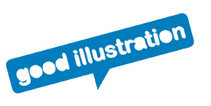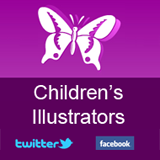How did your career in publishing begin and what have been some of the highlights?
I sort of came into publishing sideways. Albert Whitman has been independently owned for almost 100 years. When a new owner took over, I had just begun freelancing again. The company wanted to reinvigorate their identity in the marketplace. They wanted to alert the publishing world that the company was producing new, exciting books, and had a rich, extensive backlist of titles – including TheBoxcar Children Mysteries. Partnering with the director of marketing at the time, we set out to give AW&Co a fresh new look. We began a branding and marketing campaign that lasted a year. So, I got my foot in the door as a freelancer in marketing, and was hired as the full-time art director about six months later for both marketing and editorial. I have always loved books, and grew up reading Paul Zindel (Pardon Me, You’re Stepping on My Eyeball…anyone? anyone?), Judy Blume, and Agatha Christie. Now, I was in the publishing world thinking, “Is this really happening? How cool is this?”
A year later is when some of the highlights began to happen. In 2010, we launched a new early reader series, our first in almost twenty-five years. I was responsible for the design of the books as well as art directing them. It was split personality time because I was kind of my own boss (yes!) and my own critic (noooo!). It was trial by fire, as my background in book design was good, but not extensive. I researched other successful series, noted what I liked (and didn’t) about each, and then sketched out the initial layouts. Many designed revisions later, we landed on a simple, straight-forward “notebook” theme. To say I was nervous when they published would be an understatement. Based on a dog detective, The Buddy Files launched, and was a hit! It garnered positive reviews, and in 2011 it was the winner of the Edgar Award for Best Juvenile Mystery. It was a nice moment, but a larger challenge, and highlight was ahead. After 70 years, the Boxcar Children were put under my care for a book cover makeover. I was looking for an artist to re-imagine the characters, add a fresh twist, yet keep the characters classic. I wanted the tone to be a bit darker. After vetting many illustrators, Tim Jessell was chosen as the artist to bring the Alden children into the 21st century. He had a vintage feel with a contemporary edge. Each book has a sense of suspense, but without being too scary. Tim created atmospheric backdrops for each book, and receiving final art was like opening a birthday gift. The logo was also updated to incorporate old and new – paying homage to the red logos of the past – but with a modern-looking font. We added some “spine appeal” to the jackets, using blocks of primary colors to help with the update. This is definitely one of the best highlights at Whitman, but my career overall.


My goal was, and still is, to expand our stable of illustrators to energize our books. Two more examples of this will hit the shelves this spring: Jacob’s New Dress, a story about a gender non-confirming boy who likes to wear a dress, and Sugar Hill: Harlem’s Historic Neighborhood written by Coretta Scott King winner, Carole Boston Weatherford and illustrated by the über talented award-winning artist, R. Gregory Christie.




How is the art department at Albert Whitman & Co structured and what does your workspace look like?
The art department consists of myself and an extremely talented spitfire designer, Jenna Stempel. My main responsibility is the picture books and managing the schedules (as best I can) of all the books. Jenna has taken over the marketing design responsibilities, as well as creating amazing YA covers. Everything is very fluid, so between the two of us – and the editorial department under Kelly Barrales-Saylor’s watchful eye – we manage to publish approximately 60 new books a year. We share an open, common space, with the “art department” set in the back of the office in two amazing cubicles. It allows for a very entertaining environment, and we are able to share ideas openly. We have a round table where we hold weekly production and acquisition meetings, as well as taste test the various flavors of M&Ms (be warned, stay away from the pumpkin spice flavor).
Describe the journey of a picture book at Albert Whitman from words to print.
It’s a simple, yet lengthy process. Editorial (Kelly Barrales-Saylor, Wendy McClure, and Kristin Zelazko) acquire manuscripts and bring the art department into the loop. Together, we discuss the pros and cons of each story. If we feel we have something special, we gather comps and any other pertinent information on the topic, and present the manuscript to the publisher and a larger group. If approved there, artists are reviewed, chosen, and hired. Art schedules are set (then reset, and probably reset again) for cover and interior illustrations. Books are routed about five or more times from sketches to final printer-ready documents. It is almost a year from the time a manuscript is acquired to the time it is published as a book.
Tell us about the work involved in the stunning reissue of Daugherty’s original book, “Lincoln’s Gettysburg Address” which you skillfully art directed.
Thank you for the compliment. It was an interesting and rewarding project to be involved with. Since the publisher has been around almost as long as the Gettysburg Address (that might be an exaggeration), it was decided to get the archives in order. We have a pretty amazing collection of almost 1,600 books. Because of the extensive amount of archival material, a graduate student intern was hired. While doing so, she discovered a copy of a 1947 edition of Lincoln’s Gettysburg Address, with WPA-style mural designs by muralist James Daugherty. I believe she referred to it as an “epic find.” Daugherty wrote and illustrated a number of picture books, most with American history themes. He received a Newbery Medal and a Caldecott Honor, so a pretty impressive resumé, although at the time, I had no idea. The re-issue was approved, and I was given the task of reproducing a book sixty-six years old. Nothing like a little pressure to get the creative mojo going! We had five books on hand, and I was determined to keep the detail en tact and retain the richness of the original art as closely as possible. I went through each book, and then purchased two more on eBay. Since most of the pages had yellowed, some worse than others, it was like putting together a puzzle. I found the best of the best, and tried to ensure the colors were consistent for the reprint. We expanded the page count for the reissue to include an afterward by Gabor Boritt, a Lincoln scholar, and illustrated tip sheets of each panel at the back of the book. The original tip sheet – which was a one page and not illustrated – was a loose, unbound page inserted into one of the original copies. To this day, we have no idea how it was originally used. I am very proud of the finished book, as well as the teamwork involved to get it
done so seamlessly.
What subjects or themes are on Albert Whitman’s ‘hot list’ at the moment?
Albert Whitman has been known for its “issue” books – subjects that are not necessarily mainstream. We still strive to serve that purpose, but have also opened up our themes to be more broad. I think our upcoming Spring 2014 list is a nice representation of how we have evolved as a company. In picture books, we have Jacob’s New Dress, dealing with gender non-conformity, along side There Once Was a Cowpoke Who Swallowed and Ant, a freewheeling southwest re-telling of There Was an Old Lady Who Swallowed a Fly. We have a verse novel, Dust of Eden, about the Japanese internment camps during WWII and a YA novel, Skin and Bones, which is serious, yet humorous story about male anorexia. I guess our “hot list” is always about a story that needs to be heard.
.jpg)
.jpg)
.jpg)
Select a recent project which you really enjoyed to share with our audience.
Not that any of the other books don’t deserve the spotlight, but since I’ve mentioned it twice already, I guess it would be Jacob’s New Dress. The topic of gender non-conforming children is sensitive and relatively new. It is fresh take on Whitman’s wheelhouse of dealing with “issues.” There is definitely discomfort with some people when discussing it. When searching for an illustrator, it was made clear that the artist needed to be an advocate for Jacob, the main character. He is your typical dinosaur-acting-car-crashing-soccer-playing boy, who just happens to wear a dress. One illustrator was enthusiastic, but declined because ultimately the topic was too uncomfortable. Their honesty in saying that was much appreciated. It was worth the disappointment of not working with them. An artist needs to connect with the story in some way. We really lucked out with Chris Case, who ultimately brought the story to life. He had such empathy for Jacob, and created a character that anyone would want to be friends with. This was his first book as an illustrator, so it was fun to have his enthusiasm and insight into creating Jacob’s world. We are all excited to see how the book will be received (and not received) this spring.
What inspired you to become an art director?
As cliché as it sounds, it has always been a dream of mine. Reading books as a kid, I was always wondering, “How do you get to make a book? Will my name ever be in the library?” Or, “Why did they use that on the cover?” I guess somehow it was in the cards for me.
Being creative under pressure is part of an art director’s job. Give us a few examples of challenges you have faced and how you overcame them.
One I’m sure all art directors deal with is deadlines. No matter how on track a project may be, we all have lives, and sometimes our personal lives affect the project. Honesty is key. I always ask the illustrators to give me the truth (and vice versa), and we’ll make it happen. How much time do you need? Can you meet this deadline? If the communication is open, and we can all be flexible, almost always, the finished book makes it to the printer. It might sound odd, but email can be challenging, especially when you have numerous books going on with people all over the world at the same time. I can get sucked into the vast black hole that is responding to emails for an entire morning. It’s not always putting out fires, but every project has something going on. I try to respond with quick and concise answers and move forward. Keeping in touch with the illustrators, and encouraging them through the process is one of the best parts of my job. For me, the challenge is always to give 100% to each book. Some days, one book can suck the creativity out of you, and you still have two more that need to be worked on. When this happens, I tend to just step away for awhile. It’s surprising how getting some fresh air can get your creativity pumping again.
What advice do you have for illustrators looking to appeal to Albert Whitman & Co. Are there specific characters, subjects or mediums you are particularly interested in?
Each story has a different vision or look, and we rarely go into a project saying, “This needs to be done in gauche.” I think illustrators need to be flexible with their styles and hone in on a few. The more you can offer visually, the more likely you will be get reviewed for different projects. Keep working on technique, and try to venture outside of their comfort zone. Sticking to one style only limits the possibilities. I also love a good website that showcases their artwork, and a good blog showcases their personality. It’s nice to see who is behind that beautiful art.
What current trend in publishing are you most excited about?
That is difficult question to answer, especially concerning illustrators. I don’t see one style trumping another. Some artists still prefer creating on paper, while others have flipped to producing 100% digital art. Because the stories published are so very different, each book has the opportunity to shine. Wow me with spectacular work and I’ll be happy!
This interview has been syndicated courtesy of Childrensillustrators.com








